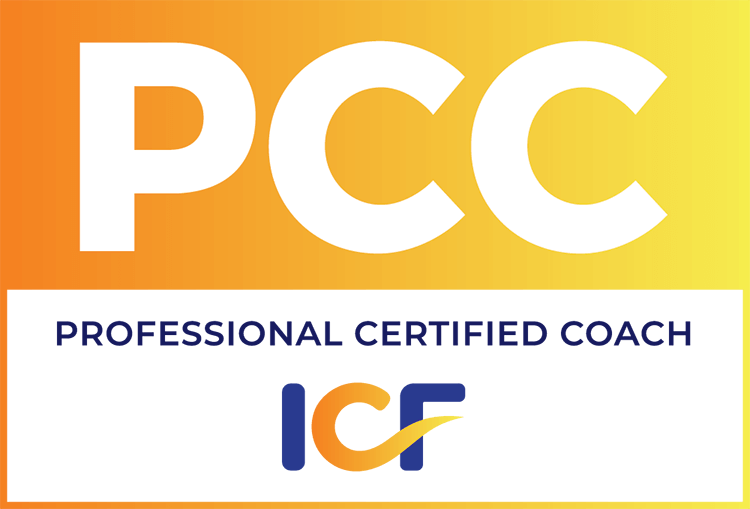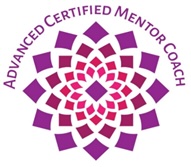Have you ever caught yourself halfway through a conversation, nodding politely while your brain is already drafting what you’ll say next? I certainly have. These days, with notifications, deadlines, and “just-a-second” distractions, real listening can feel like a lost art.
For us as coaches, though, listening isn’t just another skill on a checklist. It’s our greatest leverage point. We don’t just hear; we hold presence. We notice the pause between words, the sigh before a “yes,” the quiet hesitation that hints at an underlying truth.
In this article, I’ll walk you through what it means to listen at a truly transformational level—how to go beyond active listening into aware listening. We’ll look at how it connects to the International Coaching Federation (ICF) Core Competencies and explore what everyday people and professional coaches alike can practice to listen better.

The Lost Art of Listening
Our attention is constantly pulled in a dozen directions at once. Studies on multitasking from the American Psychological Association show that multitasking doesn’t make us more efficient—it just fragments our focus. That’s the problem: you can’t multitask awareness.
Real listening begins with intention, attention, and empathy. It’s not about advice; it’s about connection. When we slow down enough to notice what’s being said—and what’s not—we give one of the rarest gifts in modern life: our full, curious attention.
Coaching-Level Listening: Beyond Words
Most people listen to respond. Coaches listen to awaken.
The ICF defines Competency 6 – Listens Actively as focusing on what the client is and is not saying to fully understand their message in context.
That’s not about technique—it’s about posture.
• I tune in not just to words but to tone, rhythm, and silence.
• I notice what’s left out.
• And I keep the whole person in view: their story, values, and emotional landscape.
Listening matures across credential levels:
• ACC: Hears what’s said and reflects understanding.
• PCC: Listens beneath the surface for meaning, feeling, and pattern.
• MCC: Integrates it all—language, emotion, energy, and possibility.
It’s like we go from hearing individual notes to hearing chords to finally being able to discern not just the melody, but the harmony underneath it.
The Foundation Beneath Listening: Mindset and Presence
Before a single question is asked, the coach’s mindset has already entered the space.
If I show up distracted or trying to “coach well,” my listening narrows.
When I arrive grounded, open, and unattached to outcome, the conversation expands.
The ICF highlights this through two core ideas:
• Competency 2 – Embodies a Coaching Mindset (open, curious, client-centered)
• Competency 5 – Maintains Presence (fully conscious, flexible, grounded)
Presence isn’t passive—it’s alert, calm readiness. At the ACC level, that may mean giving the client space to think. At PCC, it means noticing who the client is as much as what they’re trying to do. At MCC, presence becomes almost musical—moving with the client’s rhythm, trusting silence, sensing shift.
As psychologist Ellen Langer defines it, “Mindfulness is the process of actively noticing new things.” That’s exactly what great coaching presence feels like—awake curiosity in motion.
Empathy, Trust, and Safety
Empathy isn’t sentimental; it’s structural. Competency 4 – Cultivates Trust and Safety says coaching thrives when clients feel genuinely seen.
In his book, Emotional Intelligence, Daniel Goleman defines empathy as the ability to sense how others feel and understand their perspective. It’s not stepping into their emotions; it’s standing beside them with compassion.
• ACC: Acknowledges emotion — “That sounds discouraging.”
• PCC: Explores what the emotion reveals — “What does that feeling tell you about what matters right now?”
• MCC: Partners with emotion as information — “I sense a shift when you say that—what’s happening inside?”
Empathy builds the bridge; trust allows the client to cross.
Listening to the Unspoken: Tone, Body, and Energy
If listening were only about words, transcripts would do the job. But human conversation hums with tone, rhythm, and breath—what you might call “energy signatures.”
The Science and the Myth
The “93 percent of communication is nonverbal” claim gets quoted everywhere—but it’s misleading. It comes from Albert Mehrabian’s 1967 research on how people interpret conflicting emotional messages. It never meant that words don’t matter—only that when words and tone disagree, people tend to believe the tone.
What we can take from that research isn’t a percentage; it’s perspective. The emotional quality of how something is said shapes how it’s received. Neuroscience backs that up: prosody—the melody of speech—activates emotional regions of the brain separate from language (Grandjean et al., 2005).
When a client says “I’m fine” with a sigh, I might gently ask,
“I heard a pause before you said ‘fine.’ What’s happening in that pause?”
That’s Competency 6.05 — noticing and inquiring about nonverbal cues in real time.
Energy: The Invisible Layer
Energy isn’t mystical; it’s the felt quality of a moment. At the MCC level, coaches perceive subtle shifts in language, emotion, or energy.
Maybe the client’s voice lifts when they imagine possibility or tightens when they mention obligation. I might say:
“Your tone softened there—what’s shifting for you?”
That’s partnership, not intuition on autopilot—Competency 6.04 — offering what you sense and honoring the client’s response.
Listening When You Can’t See
Many coaches meet clients virtually or by phone, where visual cues vanish—and something richer emerges.
As a blind coach, I never see my clients, not even when I’m with them in person. Yet that absence of sight can actually be an advantage.
Without visual bias, I’m more sensitive to everything I hear —the rhythm, the hesitation, the tremor behind laughter. I often tell my students, “Your eyes can lie to you.” Vision can dominate attention and drown out deeper cues. It’s not that sight is useless—it’s just not required for powerful coaching.
When you rely on presence and mindful attention, your awareness catches what eyes might miss. Research even shows that voice-only conversations can increase empathy by removing visual bias (Kraus, M. W., American Psychologist, 2017).
Listening without sight proves that real perception in coaching doesn’t come through the eyes—it comes through presence.
Common Listening Traps for Coaches
Even seasoned coaches slip into listening habits that quietly dull connection. According to the ICF, these behaviors are inconsistent with active listening.
Listening to Fix
When we start mentally considering how the problem might be solved, we’ve already left the client behind.
Competency 1 (Ethical Practice) reminds us to stay in the coaching lane.
If you notice this has happened to you in a session, simply return to the client’s voice. Later, when reviewing a recording, you might ask, “Where did I start thinking for them instead of with them?”
Our job isn’t to improve; it’s to evoke.
Listening for Story Instead of Meaning
It can be so easy to get caught up in the client’s narrative—who, what, when.
Mature coaching listens for themes and patterns: what’s driving the story.
That’s the shift from ACC clarity to PCC exploration to MCC integration.
Listening Through Bias
Bias is human. Competency 2.04 calls us to recognize and manage it.
During sessions, staying really curious is the antidote; after sessions, reflection can reveal where bias slipped in.
Listening to Perform
Performance mode can sneak into our sessions at any stage – especially when we are trying to get a good recording for our credential application.
Ironically, the most masterful sessions sound effortless because the coach has stopped trying to sound masterful and is simply present.
Listening to Instead of with
Listening “to” implies evaluation; listening with creates partnership.
That’s the essence of Competency 4 (Cultivates Trust and Safety).
During the session, be entirely with the client. After the session, be gently with yourself as the learner. Presence now, reflection later—that’s how listening matures from a skill to a way of being.
Building Mastery — Practices That Strengthen Listening
Listening grows through practice, not theory. Here are a few ways to keep honing your edge:
1. Presence Before Performance
Take thirty seconds before each session to breathe and fully return to be with your client.
That single act embodies Competencies 2 and 5—mindset and presence.
2. Curiosity Over Certainty
Questions are the currency of coaching; curiosity is the economy.
When curiosity leads, Competency 6 (Listens Actively) flows into Competency 7 (Evokes Awareness).
Curiosity isn’t something we switch on in sessions; it’s something we cultivate in how we live. The more we practice genuine curiosity in everyday life, the more naturally it shows up in our coaching.
3. Reflective Practice
After sessions, ask: What awareness emerged for me in this session?
That’s part of Competency 2.09 — Ongoing Reflective Practice.
Reflection on what we notice in sessions can help us learn to recognize and trust our intuition.
4. The Silence Stretch
After your client finishes speaking, silently give yourself the space of at least one full breath.
That small pause honors their (and your) thinking space—and that’s often where the gold is discovered.
5. Energy Awareness
Notice when a client’s energy rises or dips. Over time, patterns appear—insight clients may not yet see. That’s advanced MCC-level Competency 6 in action.
6. Peer Listening Practice
One of my favorite parts of leading mentor coaching groups is watching coaches practice together. It’s not about performance, just discovery.
When listening becomes collective learning, mastery becomes contagious.
From Listening to Awareness
When we truly listen, awareness follows naturally.
As Carl Rogers wrote in On Becoming a Person (1961):
“When someone really hears you without judgment or trying to fix you, it feels damn good.”
That’s the bridge between Competency 6 (Listens Actively) and Competency 7 (Evokes Awareness).
• ACC: Reflects for clarity.
• PCC: Invites exploration.
• MCC: Co-creates discovery.
Great listening doesn’t just lead to awareness—it is awareness expressed through attention.
A Reflection and Invitation
In a noisy world, coaches have the privilege of being the quiet that transforms. Every pause, every curious question, every moment of presence tells our clients, “You matter enough to be fully heard.”
 If you’d like to grow your listening skills in community with your peers, come join us in Coaches in CAHOOTS—where we meet weekly to practice, reflect, and refine essentials like presence, empathy, and deep listening in a supportive, judgment-free space.
If you’d like to grow your listening skills in community with your peers, come join us in Coaches in CAHOOTS—where we meet weekly to practice, reflect, and refine essentials like presence, empathy, and deep listening in a supportive, judgment-free space.
Because when we listen better, we coach better.
And when we coach better, we can help countless others start to listen more deeply.



